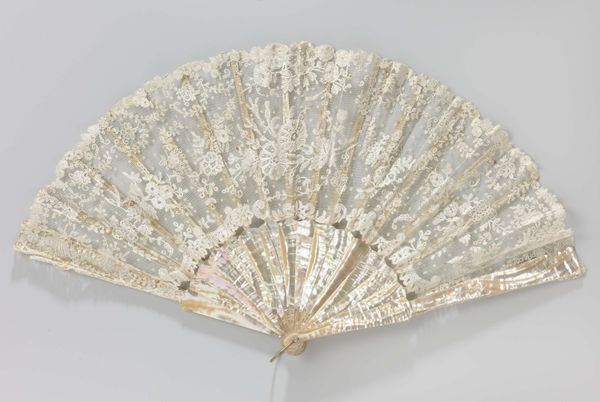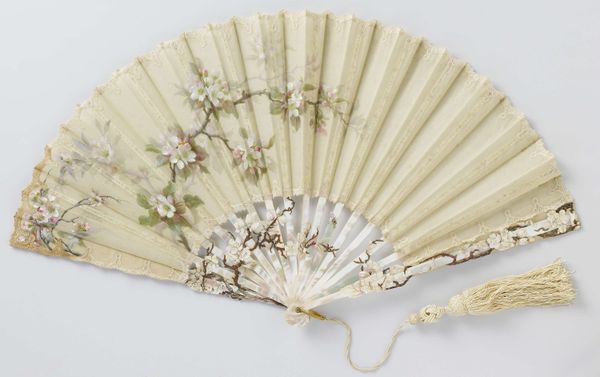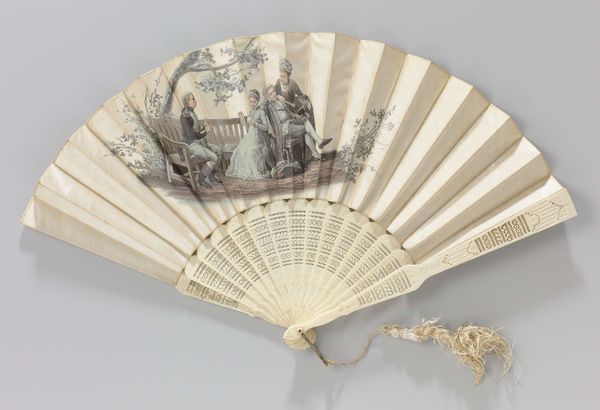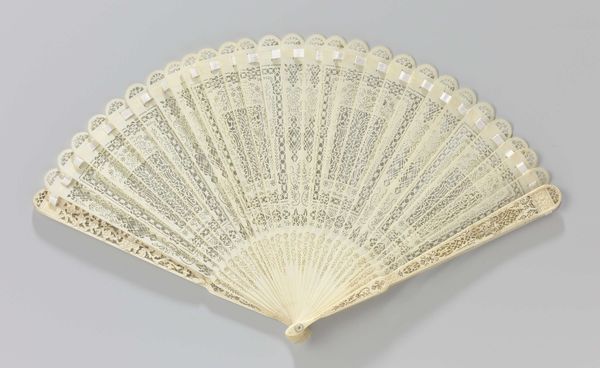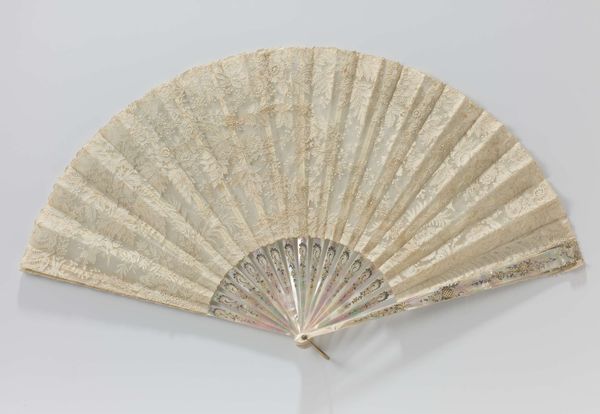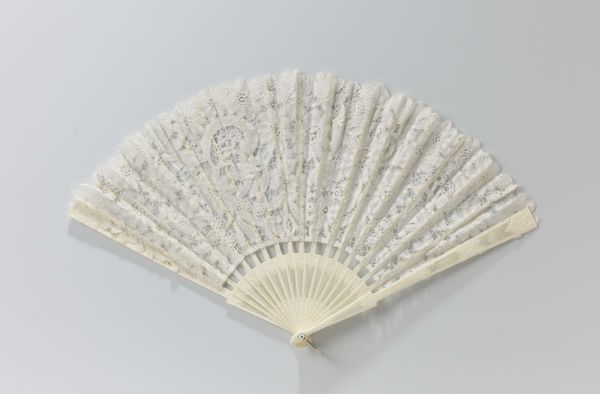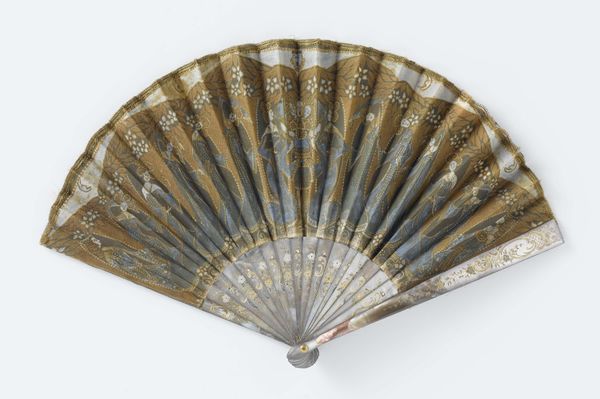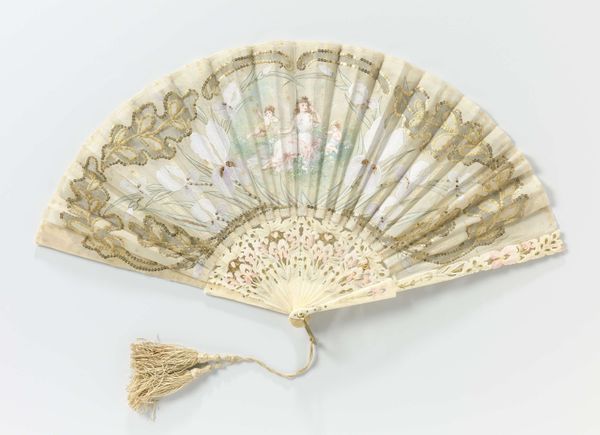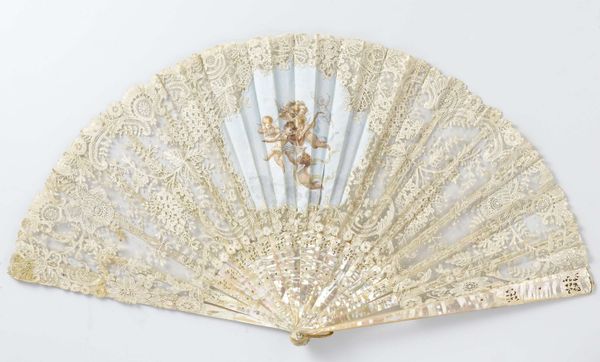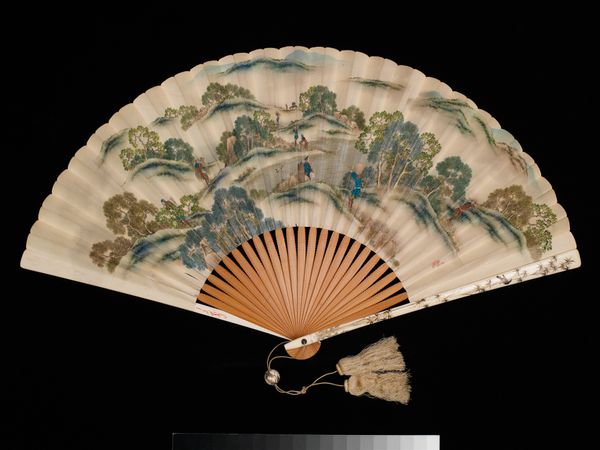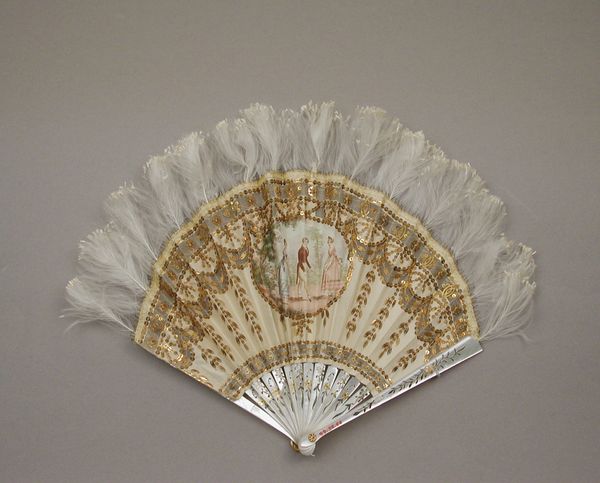
Vouwwaaier met dubbel blad van zijden organza waarop in tempera een blonde bosnimf met vleugels in een landschap, op een montuur van parelmoer c. 1890 - 1900
0:00
0:00
tempera, painting
#
art-nouveau
#
tempera
#
painting
#
landscape
#
nude
Dimensions: span 65 cm, height 35 cm
Copyright: Rijks Museum: Open Domain
Curator: Here we have a folding fan from around 1890 to 1900. It features a double leaf of silk organza painted in tempera, depicting a blonde wood nymph with wings in a landscape, mounted on a mother-of-pearl frame. Editor: It's quite ethereal, isn't it? The pale palette and the delicate material give it an airy, almost dreamlike quality. Curator: Definitely. Fans like this weren't just accessories; they were important cultural objects, often reflecting societal values and the status of the owner. The choice of materials—silk and mother-of-pearl—speaks to luxury and refinement. Editor: Absolutely, and the painting itself is so finely done. I wonder about the maker. Was it mass-produced or a unique piece crafted for a specific patron? The use of tempera on silk organza seems particularly labor-intensive. Curator: That's a crucial question. The art nouveau style, with its emphasis on natural forms and decorative elements, became incredibly popular and this drove high demand for such items among wealthy buyers, but that demand required extensive workshop-based production, with many workers sharing specialist roles. Editor: It highlights a tension, doesn’t it? An ideal of natural beauty represented on a commodity produced by many hands and then, probably consumed by someone who, in turn, likely didn’t make anything for themselves. Curator: Exactly. These kinds of objects were not just aesthetically pleasing, they signified complex dynamics of labor, production and consumption, mirroring the political economy of the period. The imagery too reinforces that status by subtly linking it with notions of nature and beauty, as represented by the winged nymph. Editor: It is striking to consider that the shimmering material, painstakingly worked and exquisitely ornamented, functioned in tandem with subtle signals and knowing codes around identity. What was held in the hand became almost as important as how. Curator: And those coded forms, like a nude figure of nature, carried messages about taste and social positioning that were as potent then as they are telling now. Editor: Thinking about that potent symbolism along with the painstaking process of making brings new resonance. It shifts our appreciation beyond mere aesthetics to the real social relations embedded within the object. Curator: Yes, viewing it through the lens of history allows us to fully grasp its richness. Editor: Precisely. And focusing on materiality lets us understand both the technical skill and broader socio-economic forces at play.
Comments
No comments
Be the first to comment and join the conversation on the ultimate creative platform.
